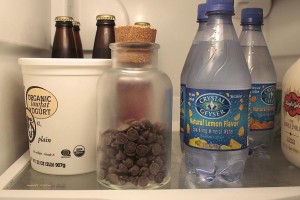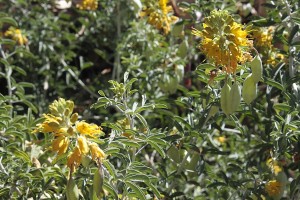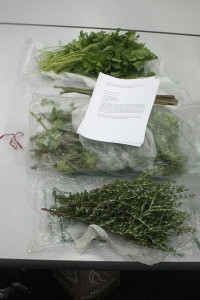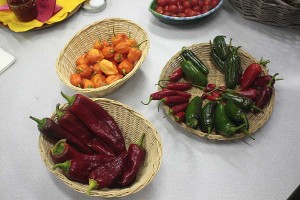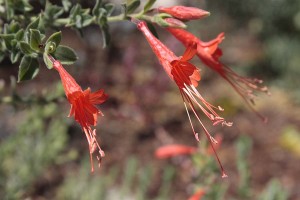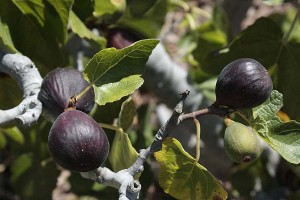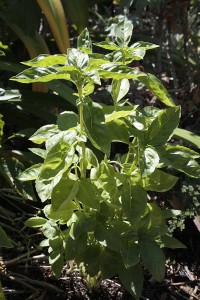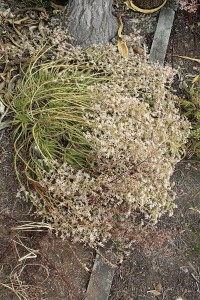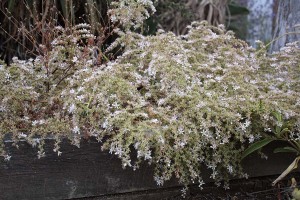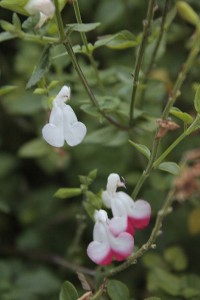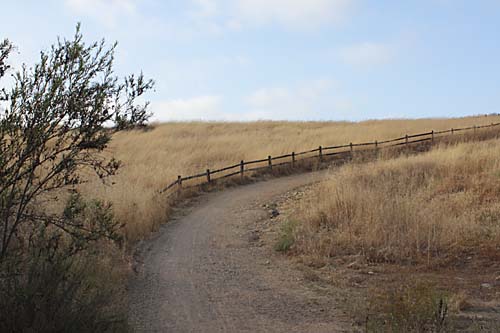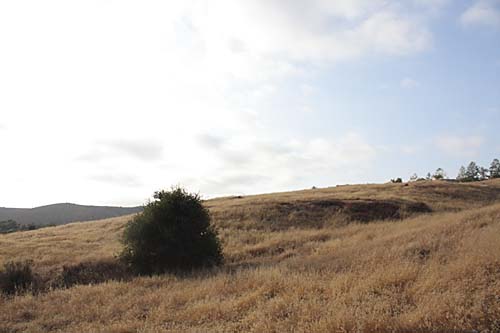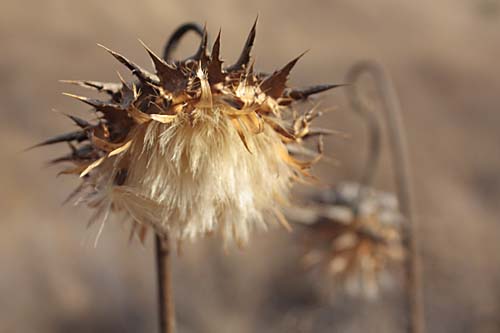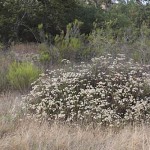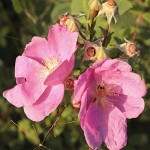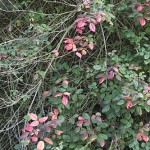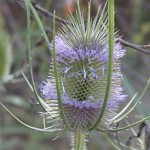Summer heat finally arrived–in September. Two hours north, Los Angeles hit 113 degrees on Monday, a degree hotter than Death Valley. At least one San Diego County town hit 109 on Monday, though down here near the coast it didn’t get much more than the low 90s. Still, really hot by what we’re used to.
Now that it’s turned hot I feel like as punishment I need to write on the chalkboard two hundred times:
I will not complain about it being a cold summer.
I will not complain about it being a cold summer.
I will not complain about it being a cold summer.
I will not complain about it being a cold summer.
I will not complain about it being a cold summer.
I will not complain about it being a cold summer.
I will not complain about it being a cold summer.
I will not complain about it being a cold summer.
I will not complain about it being a cold summer…
It was so hot that the contents of the snack bottle of vitamin Cs (aka chocolate chips) were turning into chocolate goo. John’s emergency response to stick them in the fridge averted disaster.
Over the weekend, knowing it was going to be a stretch of hot weather ahead, I tried to give a serious soak to the plants most susceptible to drying out. Anything in a pot got a good drink–a lesson I learned in August when we had two surprise days of hot summer summer weather. In August this Ceanothus lleucodermis that I’d carefully propagated from seed didn’t survive the hot spell to be planted this fall.
In addition to the potted plants, a small group that was new in August got an extra watering out of the weekly cycle. And the remaining zones of water-intensive plants and bogs got the extra soak.
Some plants didn’t seem to be bothered by the heat or dryness. This native bladderpod (Isomeris arborea) has been one of the most reliable garden plants, expanding and blooming like crazy in a spot where it has shaded roots. Another bladderpod in a more exposed location subsists on a similar amount of water, though it’s just one third the size of this plant.
The non-native Solanum pyracanthum is another plant that gets by with close to zero added water in a semi-sheltered spot near the first bladderpod. It has a much longer bloom season than my native nightshades, and it has the added bonus of a row of decorative orange spikes that decorate the center of each leaf.
A potted Stapelia gigantea also seemed to enjoy the hot weather. You can tell by the burned stems that this plant probably doesn’t get enough moisture. Still, it survives and blooms.
In my last post I mentioned a different stapelia species that stinks like carrion and is pollinated by flies. This S. gigantea has the same charming trait. The fifty pound potfull of stinky plant lives outside the window to my studio workstation. Like most people in the neighborhood we don’t bother with air conditioning, so working in my studio has been an…interesting olfactory experience. At least the stink is only really bad when you get close to the flower.
With heat often comes fire. Two recent evenings had extra-fiery sunsets. What looks like colorful sun-lit clouds in this photo is actually smoke from a 500-plus acre fire in Mexico that made it over the border. Fortunately the fire got extinguished and didn’t develop into another of the monster conflagrations we’ve experienced twice in the last seven years.
The rest of the West Coast seems to be sharing this same heatwave. The worst seems over, but there are probably more warm days ahead. So stay cool as possible–and remember to hydrate.

